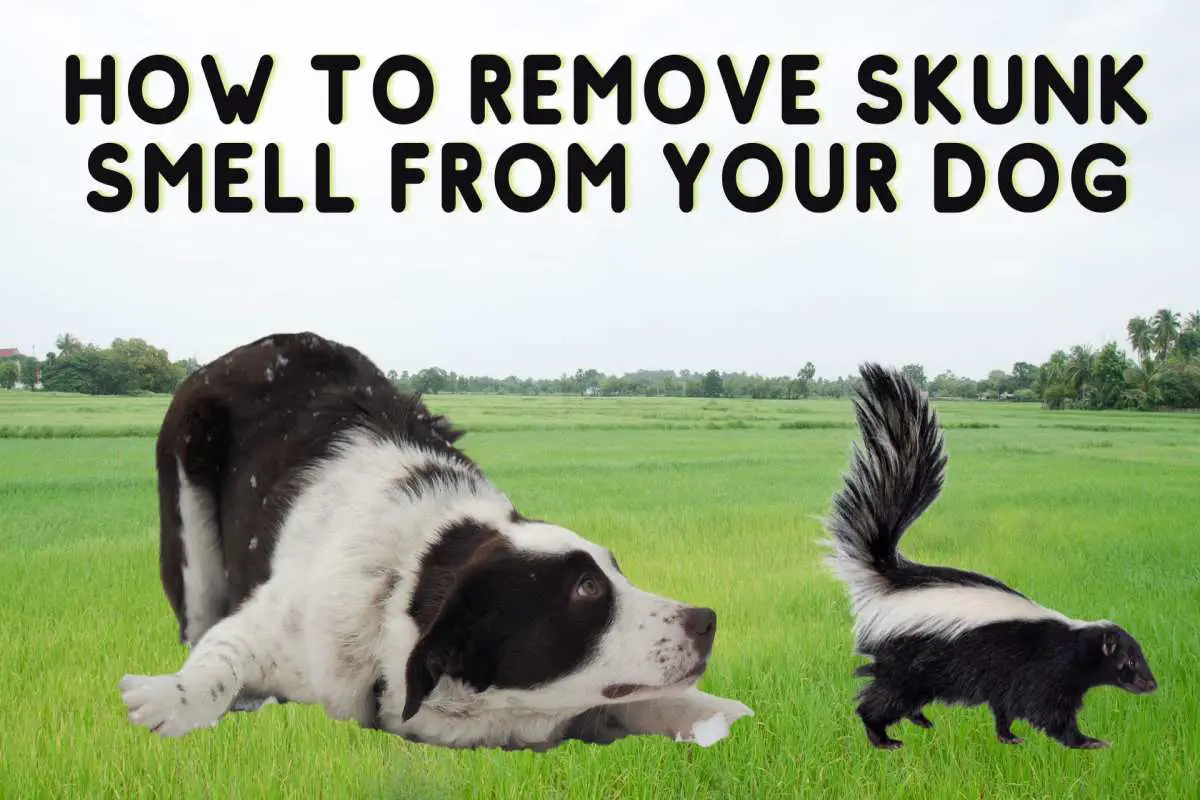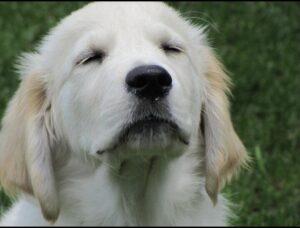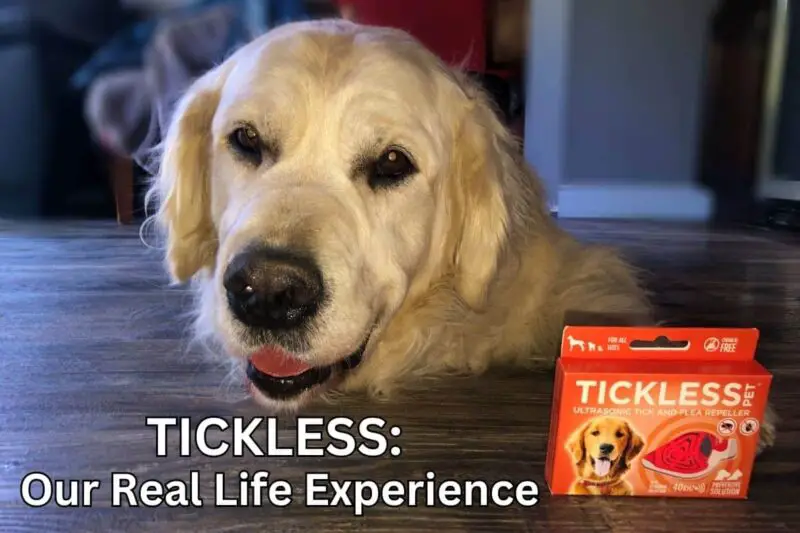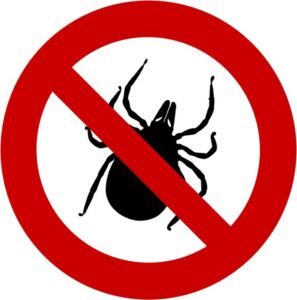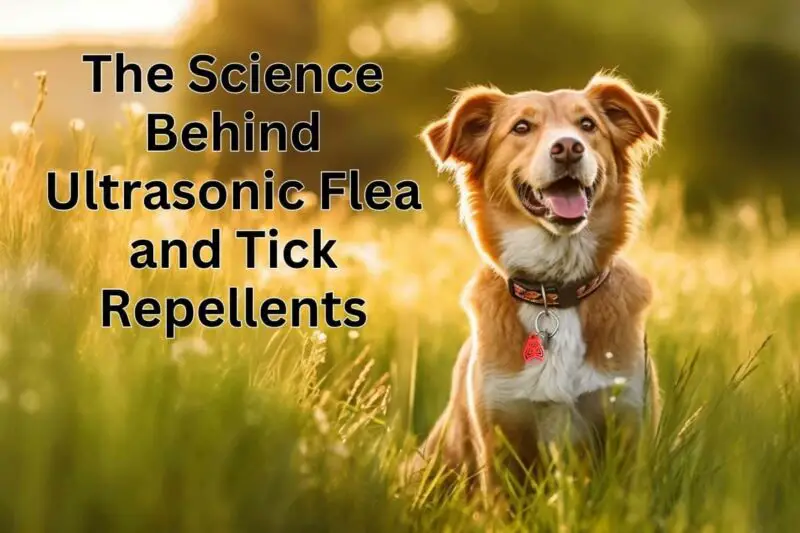How to Remove Skunk Smell from your Dog: Homemade Shampoo Recipe
Never use water, shampoo or tomato juice on a freshly sprayed dog. Instead, make a paste of baking soda, hydrogen peroxide and liquid dish detergent. Contact your vet if your dog gets sprayed in his eyes or mouth, as this could lead to serious problems like temporary blindness or anemia.
Your curious dog has decided to make friends with the local critters. Unfortunately, the skunk feels threatened and just wants to be left alone.
What do you do? Stay calm and follow these 7 easy steps.
What to Do Immediately if Your Dog Gets Sprayed by a Skunk
Your dog could not avoid being sprayed and now he is distressed and smells awful. He may be nauseous or vomit from the odor. He may frantically eat grass, paw at his face or rub his head in the ground. He may sneeze, cough, drool or develop swollen, red eyes.
Here’s what to do and what not to do right away:
| DO | DO NOT |
|---|---|
| Keep your dog as calm as possible | Spray him with water |
| Contain your dog safely outdoors | Use regular shampoo |
| Make a paste of baking soda, hydrogen peroxide and liquid dish detergent | Use tomato juice |
| Call a vet if your dog has been sprayed directly in the eyes or mouth, or was bitten | Get upset with your dog |
7 Easy Steps to Remove Skunk Smell from your Dog
1. Never use water as the first step in removing skunk odour from a dog.
Skunk spray contains oils. When these oils mix with water, it makes the smell more intense and also spreads the odor. This is why it’s important to never use water as the first step in de-odourizing your dog. The oils must be broken down before they can be washed off the skin.
2. Keep your dog safe, calm and contained outdoors.
Breathe. Make sure your dog is safe, calm and contained outdoors before going inside to make the skunk smell shampoo (paste). Take a few breaths so your dog senses that you are calm and will help him.
3. Make this homemade skunk shampoo (paste) with baking soda, hydrogen peroxide and liquid dish detergent.
Homemade Skunk Shampoo (Paste)
You will need:
- a large bowl (preferably glass)
- disposable gloves
- 1/4 cup baking soda
- 2 tsp liquid dish detergent liquid (like Dawn)
- 4 cups hydrogen peroxide (no higher than 3%)
- Pour baking soda, hydrogen peroxide and dish detergent into a glass bowl
- Mix all ingredients together into a paste
- Use immediately (while the hydrogen peroxide is still bubbling)
4. Put on gloves and use your hands to massage the paste into your dog’s fur, avoiding his nose and eyes.
5. Leave mixture on for 5-15 minutes (check after 5 minutes).
Hint: This mixture may bleach the color of dark-haired dogs. If your dog has dark hair, try to keep the paste on less than 5 minutes. You should notice the smell disappearing after a few minutes. If it doesn’t, leave paste on up to 15 minutes or mix up more paste and apply to areas you may have missed. In our opinion, a slight change in hair color is worth it.
6. After 5-15 minutes and the odor is gone (or improved), rinse the paste off your dog with warm water.
Use warm water. Cold water from the garden hose contracts muscles and is uncomfortable and stressful for your dog.
7. Shampoo your dog using your usual dog shampoo and rinse very well.
If the odor is gone, give your dog a relaxing bath with his usual shampoo. You can add a dog hair conditioner to his coat, as the paste will dry out his hair and skin.
Hints & Warnings:
- The paste is flammable. Keep your dog away from flames and don’t smoke near him.
- Do not allow your dog to lick the mixture – he could vomit.
- Never make up this mixture ahead of time and store it. The build-up of carbon dioxide can become volatile and explode.
- You may repeat this process every couple of days until the odour is completely gone.
- Many advertised skunk shampoos contain synthetic fragrances. Avoid these, as they can irritate your dog’s eyes and skin even more. Remember, if you can smell it, your dog is experiencing it hundreds of times stronger – and can’t escape it.
- If you want a mildly scented shampoo, look for natural products that contain small amounts of pure organic essential oils, like chamomile, cedar wood, geranium, sweet marjoram, myrrh, sweet orange, lavender, eucalyptus, rose or thyme.
Signs That a Skunk is Ready to Spray: Recall Your Dog!
If possible, recall your dog before he gets sprayed. A skunk will show warning signs before he sprays. If you can call your dog away quickly, the skunk may not spray. But if the skunk still feels threatened, he can spray up to 20 feet, so get your dog as far away as possible.
Here are signs that a skunk is getting ready to spray your dog. The skunk:
- arches his back
- raises his tail
- turns his back toward your dog
- hisses
- stomps his front feet
Is Skunk Spray Dangerous to My Dog?
The purpose of a skunk’s spray is to scare away predators when the skunk feels threatened. Skunks hold a foul smelling, yellow oily secretion in special glands near their anus. They can “spray” 10 mL (2 tsp) of this substance up to 20 feet.
Skunk spray contains approximately seven chemicals that become even more foul smelling when they come into contact with water. This is why it’s important to never use water as a first step following a skunk spray.
Although most dogs will only experience an intense odor and some distress, a skunk’s spray can occasionally lead to more serious issues.
Nausea and Vomiting
When a skunk sprays near his nose or mouth, your dog might drool, sneeze, vomit or eat grass frantically because of nausea.
Eye Irritation and Damage
Skunk spray acts like tear gas and, when sprayed near your dog’s eyes, his eyes may sting, burn, swell, become red or tear up.
In some cases, a direct spray into the eye can cause significant irritation to the cornea and cause temporary blindness.
Anemia
In very rare cases, a dog can become ill if a skunk sprays a large amount of secretion directly into his mouth. If the substance is swallowed, it can destroy the dog’s red blood cells, leading to a serious condition called anemia.
Sneezing, Coughing and Breathing Problems
Although a dog will inhale the foul gasses from skunk spray, his lungs will kick into action through sneezing and coughing, in an attempt to remove the irritant. Unless his breathing is already compromised (e.g. congestive heart failure, serious allergies, lung cancer or kennel cough), he likely won’t experience significant breathing problems.
When in doubt, call your vet.
FAQs
How can I lower the chances my dog will get sprayed by a skunk?
There are seven things you can do to lessen the chances your dog will get sprayed by a skunk:
- During the warm weather, don’t let your dog outside at dusk or dawn, which is when skunks are most active foraging for food.
- Keep garbage, compost and food out of your yard.
- Keep grubs under control, which are a food source for skunks.
- Plant lavender, or spread citrus peels or black pepper around the yard.
- Spray the perimeter with peppermint essential oil (diluted with a carrier oil and distilled water) or white vinegar (avoid plants or grass). Apply weekly, or as scent fades.
- Install a bright motion sensor light in the yard.
- Board up access to sheds or areas under your porch or deck.
Can I use tomato juice to get rid of skunk smell on my dog?
Tomato juice does not work, because it doesn’t break down and neutralize the oils in skunk spray. In fact, it may simply spread the smell. Instead, mix together baking soda, hydrogen peroxide and liquid dish detergent into a paste and spread it on your dog (avoiding eyes and mouth). After 5-15 minutes, wash off with water, then shampoo and rinse well.
Can skunk spray harm my dog?
Not only does the skunk spray cause distress, it can make your dog vomit, cough, sneeze and develop red, swollen eyes. If your dog gets sprayed directly in his eyes, he can suffer damage to his corneas including temporary blindness. If a large amount of spray is swallowed, it can cause severe anemia. If your dog is sprayed in his eyes or mouth, call your vet.
Can my dog get rabies from skunk spray?
Although skunks can carry rabies, it is not transmitted through their anal secretions (spray). It can be transmitted through the saliva of an infected animal, so check to see whether your dog has been bitten. If in doubt, contact your vet.
Can my dog get sprayed again right away?
If your dog has just been sprayed by a skunk, the skunk won’t be able to spray again right away. Once a skunk’s glands have released the foul-smelling oily secretion, it can take up to ten days for the skunk to replenish the substance.
Be kind to all living beings. Respect the earth we share. 
